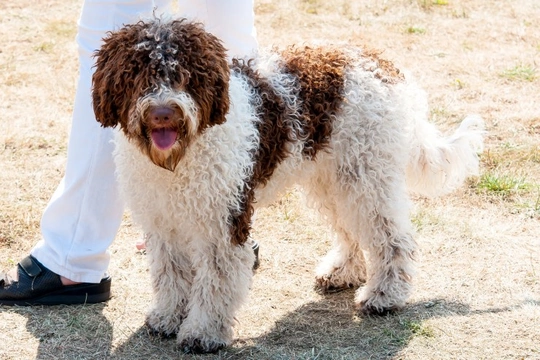
Lysosomal Storage Disease (LSD) in the Lagotto Romagnolo
Lysosomal storage disease is also sometimes known as Lagotto storage disease, as the condition affects the Lagotto Romagnolo dog breed. It is a hereditary health condition that affects the dog’s metabolic functions, due to a lack of the appropriate enzymes needed for the digestion and elimination of waste products.
This lack of enzymes causes substances that the dog’s body would normally eliminate as waste to build up to abnormally high levels in the dog’s tissue cells, generally in the nervous system, which causes the cells to swell up or die off and be unable to function.
The condition ultimately proves fatal in affected dogs, and there is no cure. A range of different lysosomal storage diseases can be found in human populations too, and as a result of this, the condition is relatively well studied and well understood.
Lysosomal storage disease is not contagious, and dogs can only develop the condition if they inherit the right combination of gene mutations to cause the affected form of the condition from both sides of their parentage.
In order to curb and limit the spread of the condition across the Lagotto Romagnolo dog breed, The Kennel Club has introduced a screening scheme for the condition, to allow Lagotto Romagnolo breeders to test their dogs for the markers of the condition before breeding, and so make an informed decision about the viability of any potential match.
In this article, we will look at lysosomal storage disease in the Lagotto Romagnolo dog breed in more detail, including how the heredity of the condition works, and how to get your dog tested for the condition. Read on to learn more.
More about lysosomal storage disease
Lysosomal storage disease is a genetic disorder caused by a gene mutation that causes affected dogs to be deficient in vital enzymes that help to metabolise and eliminate unnecessary substances from the bloodstream. These substances then build up in the cells and cause them to swell up and be unable to function as they should, which in turn, affects the dog’s nervous system.
The symptoms of the condition include potential behavioural changes such as out of character aggression, which is often mistaken for training or behavioural problems, and a range of physical anomalies such as staggering and an inability to move normally, and also nystagmus, in which the eyes appear to wobble or flicker from side to side without control.
The condition generally becomes apparent in younger dogs, with the age of onset ranging between anything from four months to four years of age. There is no cure for the condition, and the symptoms progressively worsen over time to the point where they have a significant impact on the dog’s quality of life, at which point the decision to euthanize the dog to prevent further suffering is virtually inevitable.
What sort of dogs can be affected by the condition?
There are a range of different lysosomal storage disease variants, but the type that we are referring to in this article is found in the Lagotto Romagnolo dog breed. This means that any dog of the breed may potentially inherit the gene mutation that leads to the condition, however, it is the combination of genes inherited from both parent dogs that dictates whether or not any given dog will be affected with the active form of the condition themselves.
Cross breed dogs that have partial Lagotto Romagnolo ancestry may inherit one copy of the mutated gene from the Lagotto side of their heritage; however, because two mutated genes are required to lead to the condition, cross breed dogs cannot theoretically be affected thanks to the benefits of hybrid vigour.
How does the heredity of the condition work?
Lysosomal storage diseases is an autosomal recessive hereditary condition, which as mentioned, means that it is the combination of genes inherited from both parents that dictates the ultimate status of any given dog. Dogs are assigned to one of three statuses for the condition: clear, carrier or affected.
- Two clear dogs will produce clear puppies.
- Two affected dogs will produce affected puppies.
- Two carriers will produce a mix of 50% affected, 25% clear and 25% affected.
- A clear dog and a carrier will produce 50% clear and 50% carriers.
- A clear dog and an affected dog will produce a litter of carriers.
- A carrier and an affected dog will produce 50% carriers and 50% affected.
How to get your dog tested for lysosomal storage disease
In order to ensure that only healthy dogs are used for breeding and prevent the affected form of lysosomal storage disease being passed on through the breed line, potential Lagotto Romagnolo breeders are strongly advised to find out their dog’s status (and that of the other parent dog) prior to breeding.
This involves sending off a DNA sample from your dog (your vet can draw this for you) to one of The Kennel Club’s approved laboratories, and then the results of your dog’s status will be returned to you.



